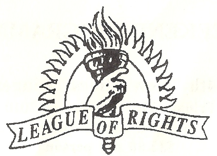The Poison in the Glass: Why Even “Moderate” Alcohol is a Losing Bet for Your Brain, Body, and Soul, By Mrs Vera West and Mrs (Dr) Abigail Knight (Florida)
For at least thirty years the public was sold a comforting fairy tale: a daily glass of red wine was practically medicine. Resveratrol! French paradox! A neat J-shaped curve in every epidemiology textbook showing that light-to-moderate drinkers lived longer and kept their marbles better than teetotallers or lushes. That story is now dead. The autopsy report was published in 2025 in BMJ Evidence-Based Medicine, and the coroner's verdict is brutal: alcohol is a dose-dependent neurotoxin with no safe lower limit for the human brain. Every single drink moves the dial toward dementia, cancer, and the ancient sin the Temperance Movementgot right — drunkenness as the thief of reason itself.
1. The Dementia Bomb Nobody Saw Coming
The new study followed 559,559 middle-aged and older adults for up to twelve years, combining classic observational data with Mendelian randomisation, the genetic equivalent of a randomised controlled trial. When you remove the confounding fog of "sick quitters" (people who cut back because early dementia was already gnawing at their brains), the famous J-shaped curve flattens into a grim, straight line sloping upward.
Every standard deviation increase in lifelong alcohol intake → 15% higher dementia risk.
Double the prevalence of alcohol use disorder in a population → 16% more dementia cases.
The effect holds across European, African, and Latin-American ancestries, men and women, young-old and old-old.
Translation: there is no amount of alcohol that does not erode the machinery of memory and executive function. The brain you save by skipping "just one glass" tonight is literally your own in 2045.
2. Cancer: The Other Dose-Dependent Disaster
Alcohol was upgraded to a Group 1 carcinogen by the World Health Organization in 1988, right alongside asbestos and tobacco, yet the memo never really reached the public. The mechanism is now crystal-clear: ethanol → acetaldehyde → DNA adducts → mutations.
Even 10 g alcohol/day (one standard drink) raises overall cancer risk by ~5–8%.
50 g/day (≈4–5 drinks) increases it 30–50%, with the steepest gradients for breast, mouth, throat, oesophageal, liver, and colorectal cancers.
The Lancet Oncology's 2021 global burden study attributed 4.1% of all new cancer cases worldwide to alcohol, 741,300 cases that would not have happened if every human had stayed stone-cold sober.
There is no J-shaped curve for cancer. Only a hockey stick.
3. The Temperance Movement Was Right About the Obvious Thing
Long before we had MRI scans or Mendelian randomisation, the 19th-century temperance crusaders noticed something any honest observer still sees every Friday night: alcohol dissolves the faculty of reason in real time. One drink impairs prefrontal cortex function. Two drinks slow reaction time more than standing at the drunk-driving limit of 0.08% BAC. Three drinks turn most humans into worse drivers than if they were legally blind. Modern neuroimaging confirms what any bartender already knew: ethanol suppresses the dorsolateral prefrontal cortex (planning, consequence evaluation) while goosing the amygdala (impulsivity, aggro). The result is the timeless trilogy: poor judgment, inflated confidence, and emotional volatility. In other words, alcohol temporarily makes you stupid and permanently raises the odds that one day you'll be stupid for good, or just dead.
4. The Hidden Accomplice: Linoleic Acid in Seed Oils
Here's the part most people still miss. Alcohol isn't working alone. The same liver that has to detoxify ethanol into acetaldehyde also has to detoxify 4-hydroxynonenal (4-HNE), the vicious aldehyde produced when omega-6 linoleic acid from soybean, corn, canola, and sunflower oils gets oxidised. Both acetaldehyde and 4-HNE are reactive oxygen species on steroids. They cross-link proteins, shred mitochondrial DNA, and trigger the exact same lipid peroxidation cascade. The outcome? Alcoholic fatty liver and "non-alcoholic" fatty liver are the same disease wearing different masks. Your mitochondria don't care whether the poison came from a bottle or a bottle of "vegetable" oil.
5. The Way Out is Simpler Than You've Been Told
Alcohol: the biologically correct dose is zero. Not "up to 7 drinks a week for women, 14 for men." Zero. Your brain and oncologist will both send thank-you notes.
Linoleic acid: drive daily intake below 5 g, ideally under 2 g. That means no seed oils, period. Cook with butter, ghee, tallow, or coconut oil. Read labels like your life depends on it, because it does.
If you absolutely must drink once in a blue moon: 600–1200 mg NAC + 100 mg thiamine 30–60 minutes beforehand blunts acetaldehyde damage. But understand you are still playing Russian roulette with slower bullets.
Final Thought
The old temperance ladies in their bonnets weren't joy-killing prudes; they were amateur neuroscientists who watched alcohol turn husbands into brutes and children into orphans. Modern science has merely given their intuition PhDs, PET scans, and hazard ratios. Every civilisation that discovered fermentation eventually had to decide whether the temporary euphoria was worth the long-term wreckage. Ours is no different. The data are now unequivocal: the poison in the glass is not your friend. It never was.
Skip the drink tonight. Your future self — the one who still remembers your grandchildren's names, who never hears the word "oncology," who can still read a book without the pages swimming — will thank you.
https://articles.mercola.com/sites/articles/archive/2025/11/20/alcohol-and-dementia-risk.aspx


Comments